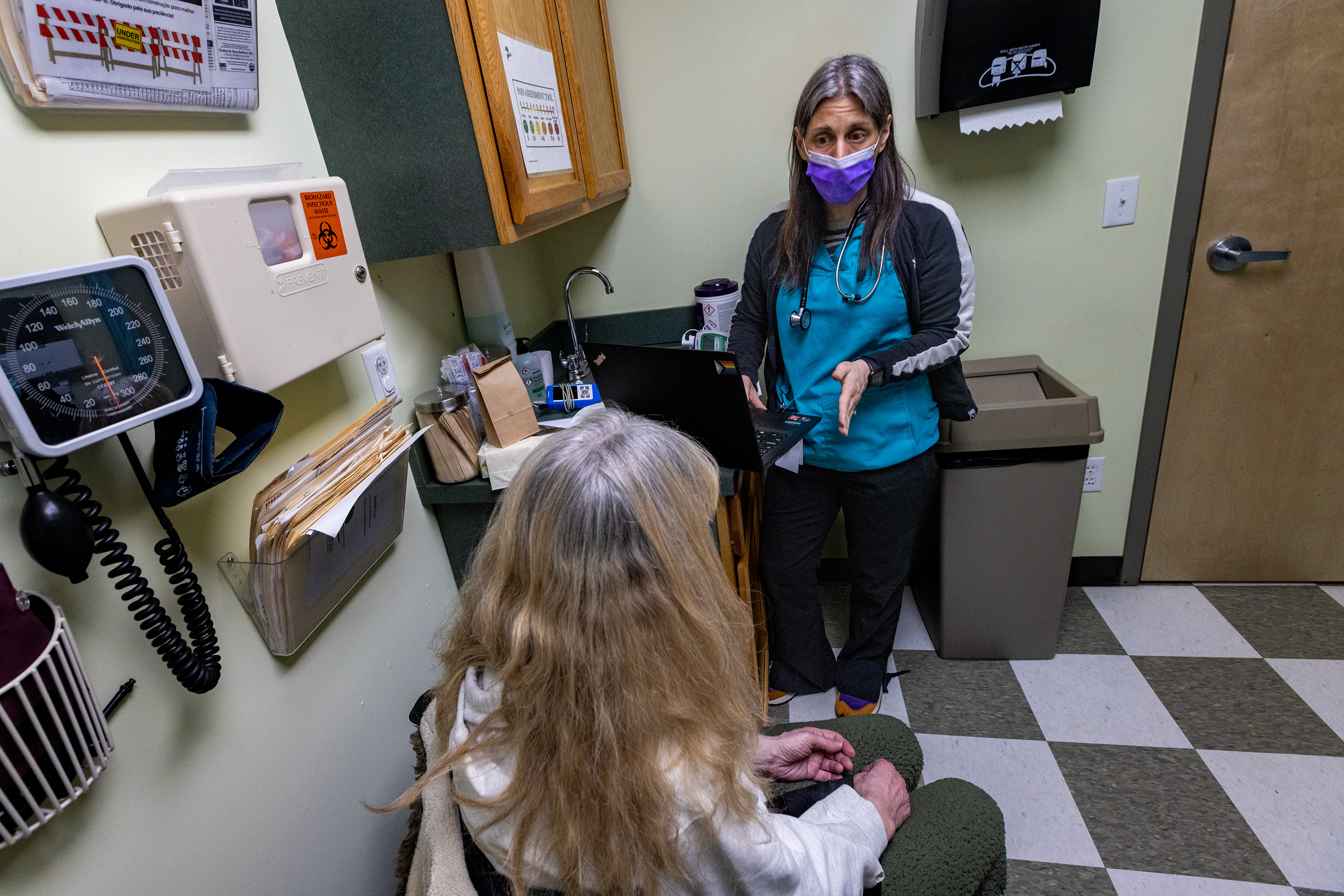Some Roadblocks to Lifesaving Addiction Treatment Are Gone. Now What?

Copy And Paste To Republish This Story
Some Roadblocks to Lifesaving Addiction Treatment Are Gone. Now What?
By
Martha Bebinger, WBUR
March 21, 2023
Some Roadblocks to Lifesaving Addiction Treatment Are Gone. Now What?Martha Bebinger, WBURFor two decades as opioid overdose deaths rose steadily the federal government limited access to buprenorphine, a medication that addiction experts consider the gold standard for treating patients with opioid use disorder. Study after study shows it helps people continue addiction treatment while reducing the risk of overdose and death.Clinicians who wanted to prescribe the medicine had to complete an eight-hour training. They could treat only a limited number of patients and had to keep special records. They were given a Drug Enforcement Administration registration number starting with X, a designation many doctors say made them a target for drug-enforcement audits.Just the process associated with taking care of our patients with a substance use disorder made us feel like, Boy, this is dangerous stuff,' said Dr. Bobby Mukkamala, who chairs an American Medical Association task force addressing substance use disorder.The science doesnt support that but the rigamarole suggested that.That rigamarole is mostly gone. Congress eliminated what became known as the X-waiver in legislation President Joe Biden signed late last year. Now begins what some addiction experts are calling a truth serum moment.Were the X-waiver and the burdens that came with it the real reason only about 7% of clinicians in the U.S. were cleared to prescribe buprenorphine? Or were they an excuse that masked hesitation about treating addiction, if not outright disdain for these patients?Theres great optimism among some leaders in the field that getting rid of the X-waiver will expand access to buprenorphine and reduce overdoses. One study from 2021 shows taking buprenorphine or methadone, another opioid agonist treatment, reduces the mortality risk for people with opioid dependence by 50%. The medication is an opioid that produces much weaker effects than heroin or fentanyl and reduces cravings for those deadlier drugs.The nations drug czar, Dr. Rahul Gupta, said getting rid of the X-waiver would ultimately prevent millions of deaths.The impact of this will be felt for years to come, Gupta said. It is a true historic change that, frankly, I could only dream of being possible.Gupta and others envision obstetricians prescribing buprenorphine to their pregnant patients, infectious disease doctors adding it to their medical toolbox, and lots more patients starting buprenorphine when they come to emergency rooms, primary care clinics, and rehabilitation facilities.We are transforming the way we think to make every moment an opportunity to start this treatment and save someones life, said Dr. Sarah Wakeman, the medical director for substance use disorder at Mass General Brigham in Boston.Wakeman said clinicians she has been contacting for the past decade are finally willing to consider treating patients with buprenorphine. Still, she knows stigma and discrimination could undermine efforts to help those who arent being served. In 2021, a national survey showed just 22% of people with opioid use disorder received medications such as buprenorphine and methadone.The test of whether clinicians will step up and if prescribing will become more widespread is underway in hospitals and clinics across the country as patients struggling with addiction queue up for treatment. A woman named Kim, 65, is among them.Kims recent visit to the Greater New Bedford Community Health Center in southern Massachusetts began in an exam room with Jamie Simmons, a registered nurse who runs the centers addiction treatment program but doesnt have prescribing powers. KHN agreed to use only Kims first name to limit potential discrimination linked to her drug use.Kim told Simmons that buprenorphine had helped her stay off heroin and avoid an overdose for nearly 20 years. Kim takes a medication called Suboxone, a combination of buprenorphine and naloxone, which comes in the form of thin, filmlike strips she dissolves under her tongue.Its the best thing they could have ever come out with, Kim said. I dont think I ever even had a desire to use heroin since Ive been taking them.Buprenorphine can produce mild euphoria and slow breathing but theres a ceiling on the effects. Patients like Kim may develop a tolerance and not experience any effects.I dont get high on Suboxones, Kim said. They just keep me normal.Still, many clinicians have been hesitant to use buprenorphine known as a partial opioid agonist to treat an addiction to more deadly forms of the drug.Kims primary care doctor at the health center never applied for an X-waiver. So for years Kim bounced from one treatment program to another, seeking a prescription. During lapses in her access to buprenorphine, the cravings returned an especially scary prospect after the powerful opioid fentanyl largely replaced heroin on the streets of Massachusetts, where Kim lives.Ive seen so many people fall out in the last month, Kim said, using a slang term for overdosing. That stuff is so strong that within a couple minutes, boom.Because fentanyl can kill so quickly, the benefits of taking buprenorphine and other medications to treat opioid use disorder have increased as deaths linked to even stronger types of fentanyl rise.Buprenorphine is present in a small percentage of overdose deaths nationwide, 2.6%. Of those, 93% involved a mix of one or more other drugs, often benzodiazepines. Fentanyl is in
Tuesday, March 21, 2023 at 9:00 am